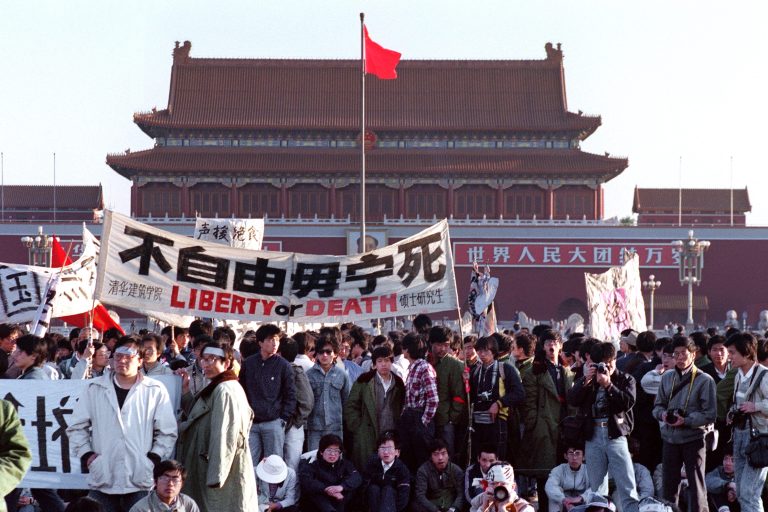Commentary
The World Health Organization is pressing forward with a controversial “pandemic treaty” that some say paves the way to making the organization a form of centralized, global government that will have legally binding control over member states if a pandemic is declared.
How it started
The story dates back to November of 2021, just as Coronavirus Disease 2019 (COVID-19) pandemic hysteria had finally jumped the shark.
As vaccine passports, mandatory masking, school shutdowns, and even quarantine camps had become the norm in virtually all establishment workplaces and effectively all western societies, the WHO called for a Special Session of the World Health Assembly (WHA).
The goal of the WHA’s convergence was to “consider” the “benefits of developing a WHO convention, agreement or other international instrument on pandemic preparedness and response.”
Success
You are now signed up for our newsletter
Success
Check your email to complete sign up
The significance of the assembly was it was only the second time in history that the WHA, which normally conducts only a single annual meeting in May, had been gathered for a Special Session.
During the Session, the WHA decided to move forward with the creation of what it called a “New Instrument,” with the phrase “pandemic preparedness and response” repeated ad nauseam.
Additionally, the document sought to find “structural solutions to promote a whole-of-government and whole-of-society approach” that would be “legally binding on States Parties that opt to ratify it.”
One of the more notable aspects of the initiative at the time was the wish to strengthen what was called the “One Health” approach, defined at the time by WHO Europe as having “multiple sectors communicate and work together to achieve better public health outcomes.”
The New Instrument was ultimately titled The World Together, which was the philosophical way of describing the creation of an “Intergovernmental Negotiating Body (INB).”
By December, documents for the INB had declared “the need for a comprehensive and coherent approach to strengthen the global health architecture,” that would involve having member states and stakeholders conduct themselves under a “principle of solidarity with all people and countries” during a WHO-declared pandemic.
Although wire reporting from outlets such as Reuters and AP had stated at the time of the WHA’s assembly that the European Union and 70 other countries were on board with the proposal, the United States, India, and Brazil had resisted.
By December, the Biden Administration had changed its tune, showing support for the INB when former White House Press Secretary Jen Psaki was quoted as stating the White House was “committed to working with member states to take forward the recent recommendations of the working group on preparedness and response.”
“That includes developing a new WHO convention, agreement or other international instrument and making agreements to improve the effectiveness and agility of international health regulations,” she added.
By May of 2022, INB verbiage published on the WHO’s official website had been updated to include not only countries, but “interested stakeholders,” defined as “non-State actors with a demonstrable interest in pandemic preparedness and responses” who would participate in a set of public hearings on the initiative.
The “stakeholders” included names both familiar and notorious to the anti-lockdown and anti-vaccine passport social credit community such as the Bill & Melinda Gates Foundation, The Wellcome Trust, The Rockefeller Foundation, and the Clinton Health Access Initiative.
How it’s going
The next round of the INB is set to convene Feb. 27 and run to March 3. The most notable aspect of the upcoming consortium is that a “Zero Draft” of The World Together plan has been produced and will be discussed at the round table.
Now called the “WHO CA+,” the 32-page Zero Draft now includes a lengthy 5-page preamble of clauses, such as statements that the INB is “reflecting” on “the lessons learned from coronavirus disease (COVID-19)” and serious outbreaks in isolated locales around the world, such as Ebola, HIV, and Monkeypox.
The 13th clause stated the INB is “noting with concern” how COVID revealed “serious shortcomings in preparedness – especially at city and urban levels,” which indicated “the need to better prepare for future health emergencies.”
One notable aspect of the document is a “Definitions” section, which includes terms such as “infodemic,” “universal health coverage,” and “inter-pandemic.”
However, those terms are as of time of writing, yet undefined.
But the term “inter-pandemic” is used in the text of the document 6 other times, such as in Article 6, which references the deployment and sustainment of a “global supply chain and logistics network” to be utilized during times designated as a pandemic.
The usage of the term implies that human history will be divided for the purposes of the INB into “pandemic” times and “inter-pandemic times” as one such paragraph states, “The Parties shall support the Network’s development and operationalization, and participate in the Network, within the framework of WHO, including through sustaining it in inter-pandemic times as well as appropriate scale-up in the event of a pandemic.”
Article 15 on “Global Coordination, Collaboration and Cooperation” states that member states recognize “the central role of WHO as the directing and coordinating authority on international health work,” and must be mindful of “the need for coordination with regional organizations, entities in the United Nations system and other intergovernmental organizations.”
“The WHO Director-General shall, in accordance with terms set out herein, declare pandemics,” the section adds.
The term “infodemic” is also utilized in the document in Article 17, “Strengthening Pandemic And Public Health Literacy,” where it states that “each Party is encouraged to…promote and facilitate, at all appropriate levels” the “development and implementation of educational and public awareness programmes on pandemics and their effects.”
The purpose, it states, is “communicating risk and managing infodemics through effective channels, including social media.”
“Legally binding” is a term that is used only once in the body of draft document, however, and in reference to the development and usage of the aforementioned supply chain and logistics network: “The commitment to facilitate such access is understood to be legally binding and to apply in all circumstances, consistent with humanitarian principles.
The term appears three other times in a four paragraph preamble “background, methodology, and approach” section, which stated, “The INB established a process and systematic approach for its work and agreed, at its second meeting, that the instrument should be legally binding and contain both legally binding as well as non-legally binding elements.”
The term “relevant stakeholders” appears six times in the document, entirely in the clause recitals, supply chain and logistics, and a “Guiding Principles and Rights” section.
‘Relevant stakeholders’
An additional document accompanying the Feb. 27 INB lists a revised set of “Observers,” “Non-State Actors,” and “Other Stakeholders” who may participate in and speak at both the central INB and relevant subgroups.
Significant names include a 13 group cluster of United Nations bodies, including the UN itself, the International Atomic Energy Agency, and the Food and Agriculture Organization of the United Nations.
Observers include Palestine, the Holy See, Gavi, the Vaccine Alliance, the International Committee of the Red Cross, and four other groups.
“Non-State Actors” references a link to the WHO website that lists 218 private organizations, which includes the entities listed in May of 2022.
Entities such as the Africa CDC, the Council of Europe, the IMF, the WTO, and the World Bank are included among “Other Stakeholders.”
Human rights
The Zero Draft includes an Article 14 titled “Protection of Human Rights” that requires signatories to “incorporate into its laws and policies human rights protections during public health emergencies.”
Yet the specific wording used states that “any limitations on human rights” must only be “aligned with international law” and that restrictions are “nondiscriminatory, necessary to achieve the public health goal and the least restrictive necessary to protect the health of people.”
While the phrasing may curl the lips of observers who decried the western world’s soft emulation of the Chinese Communist Party’s “Zero-COVID” social credit system during the COVID-19 pandemic, in an instance such as the recent outbreak of Marburg Disease, a non-respiratory contagion with a very high fatality rate that appeared in Africa earlier in February, quarantine of victims and their contacts is the only way that humans and society have available to combat an outbreak, as no medicine or vaccine has proven viable and treatment is limited to the provision of fluids.
Media reactions
The narrative around the coming INB has been protected by establishment media through a combination of not reporting on the topic and “fact checking” by outlets such as Associated Press.
One Feb. 23 “Fact Check” by AP cited an Instagram post by The Epoch Times, which recently ran an article about U.S. Senators on the Republican Side of the isle who were described as “push[ing] back” on the pandemic treaty, as making false representations.
AP said ET’s Instagram post stated, “The Biden administration is in the process of finalizing a deal that would give the WHO near-total authority to dictate America’s policies during a pandemic.”
“This includes vaccine policies, lockdown policies, school closure policies, the contact tracing of U.S. citizens, and even the monitoring of online speech if that speech goes against the official narrative,” it added.
AP rated the claim “false” based on the opinion of “multiple experts, including one involved in the draft process.”
The U.S. Department of Health and Human services told AP in a statement, “The WHO has no such enforcement mechanisms, and its non-binding recommendations to member states are just that: non-binding. Any associated actions at the national level will remain reserved to sovereign states, including the United States.”
While countries such as the United States may ultimately be able to simply ignore edicts issued by the INB after Director General Tedros declares a pandemic, the requirements of the WHO CA+ invoke a mandate of significant cooperation for countries to govern themselves in accordance with the central directorates.
For example, Article 8 of the Zero Draft states that signatory parties agree to “strengthen the capacity and performance of national regulatory authorities and increase the harmonization of regulatory requirements at the international and regional level, including, as applicable, through mutual recognition agreements.”
Article 15 titled “Global Coordination, Collaboration And Cooperation” states that signatories agree to “promote global, regional and national political commitment, coordination and leadership for pandemic prevention, preparedness, response and recovery by means that include establishing appropriate governance arrangements.”
Meanwhile, Article 16 is titled “Whole-of-Government and Whole-of-Society Approaches At the National Level” and requires signatories to “establish, implement and adequately finance an effective national coordinating multisectoral mechanism with meaningful representation, engagement and participation of communities.”
For countries who are not as financially independent as the world-leading United States, the impact on sovereignty may be even more pointed.
Article 19, titled “Sustainable and Predictable Financing” states that signatory countries must assign 5 percent of their national budget and an undetermined percentage of their GDP to “pandemic prevention, preparedness, response and health systems recovery.”
Additionally, poorer countries may be tethered to the agreement as wealthier countries are mandated by the agreement to contribute financial provisions during a time of pandemic.
Countries who sign onto the WHO CA+ mechanism will be bound for a period of two years, after which they may give notice to the WHO that they no longer wish to participate.
Once giving notice, the countries will be held to the agreement for an additional year before being discharged, the Zero Draft states.







